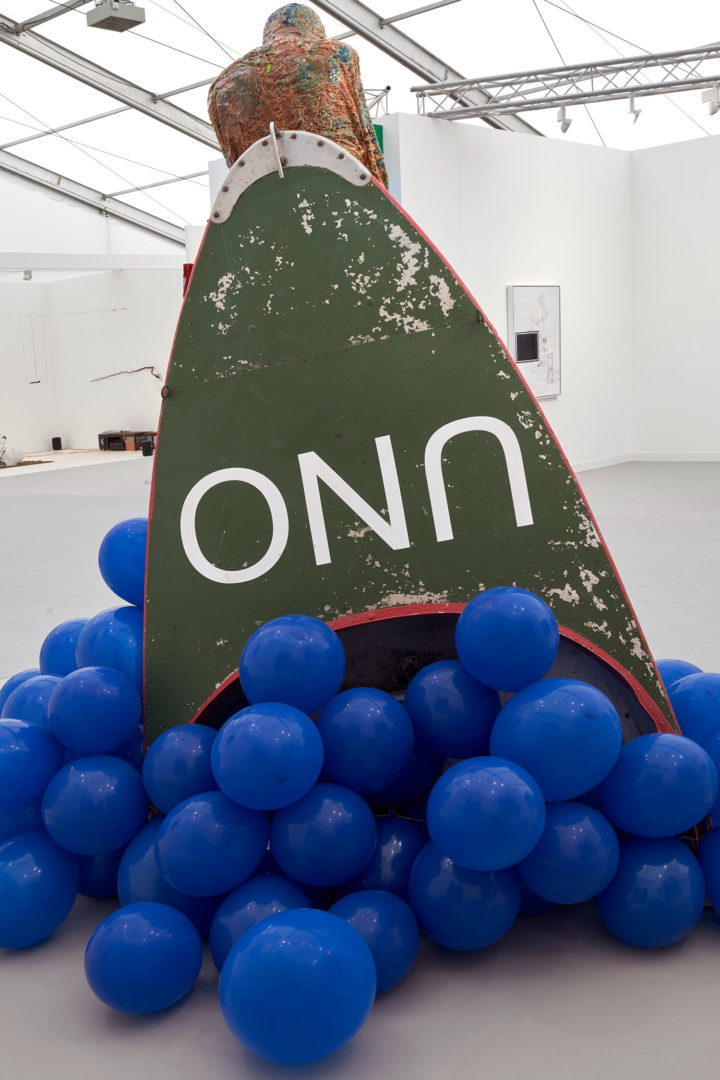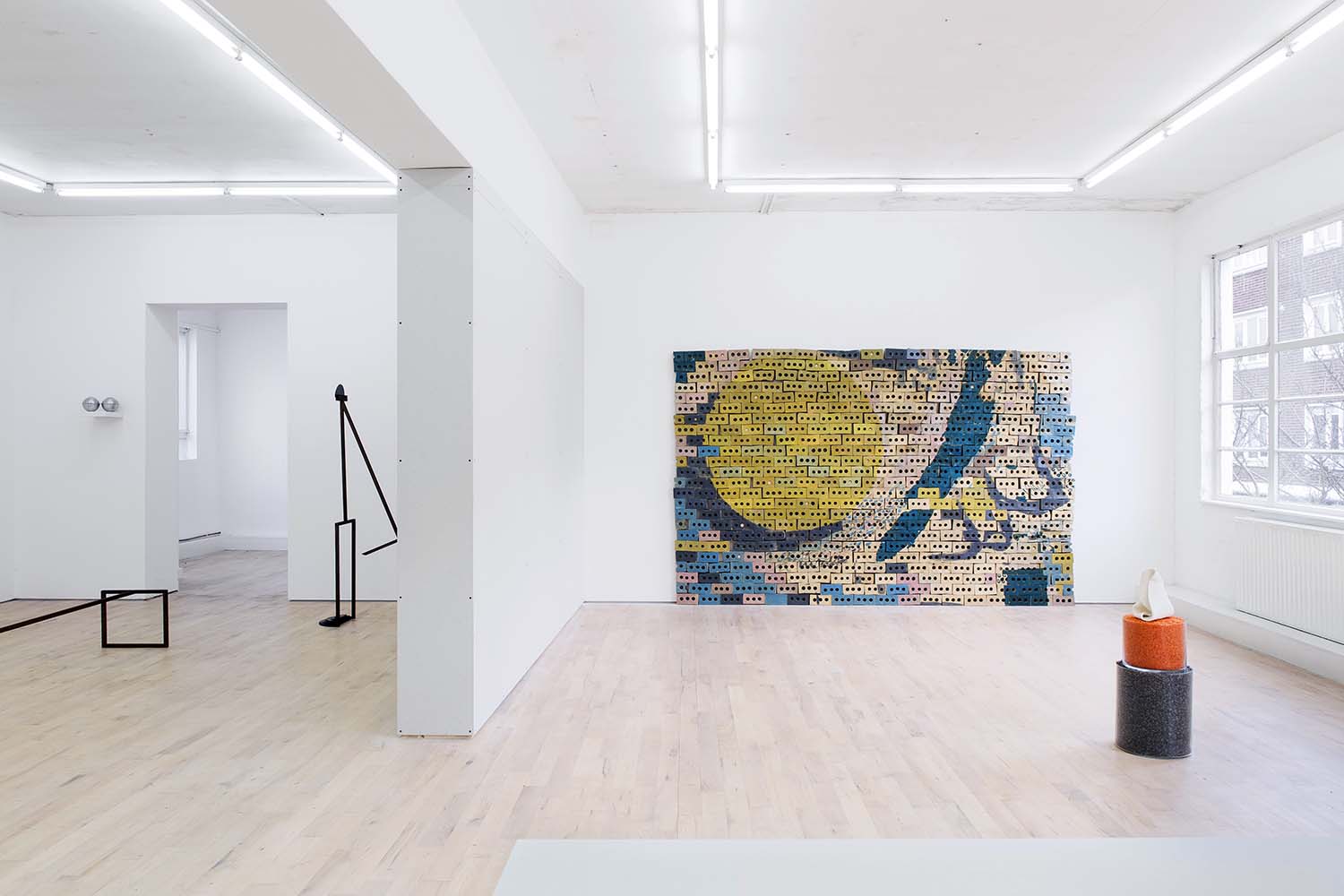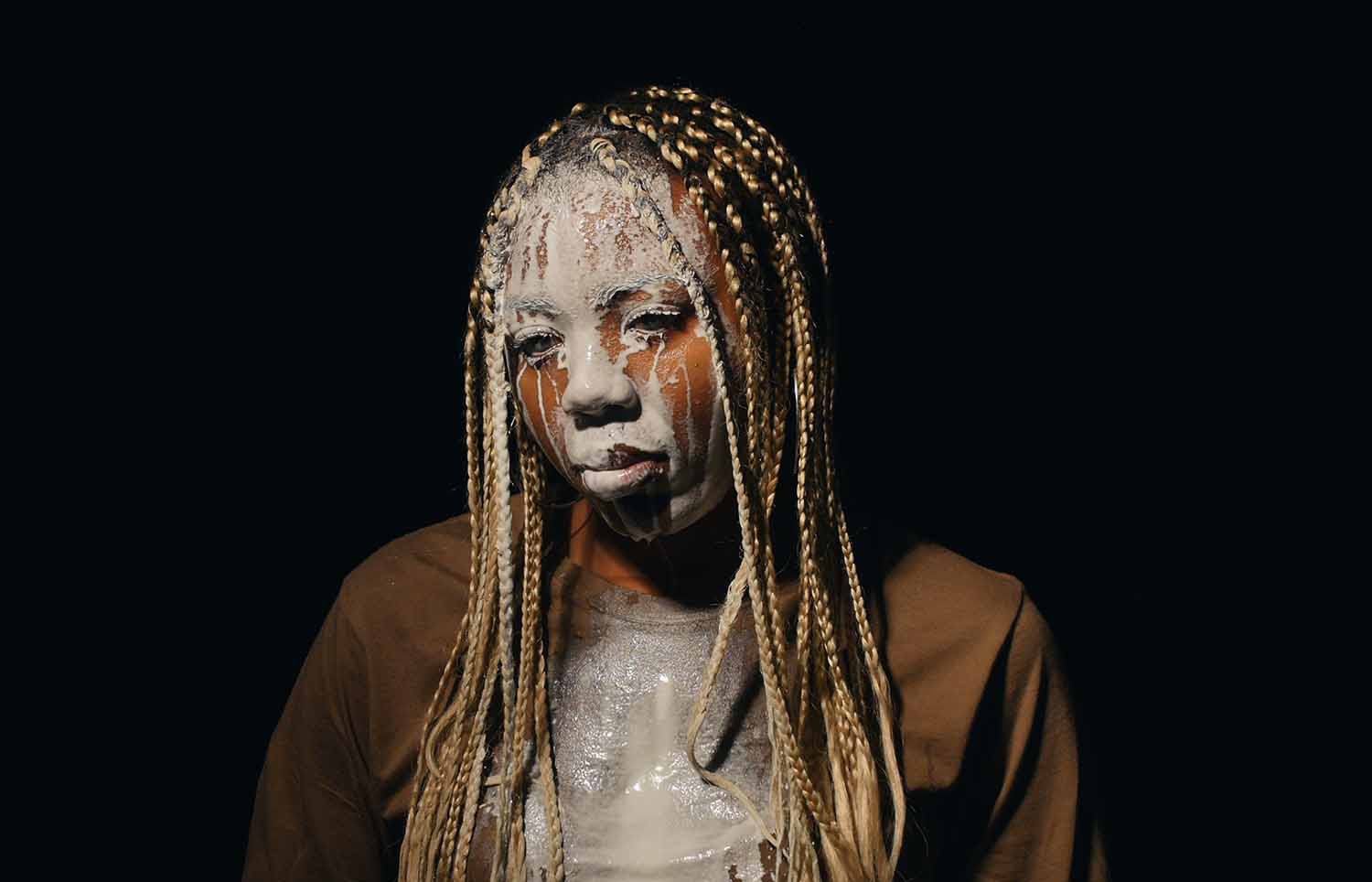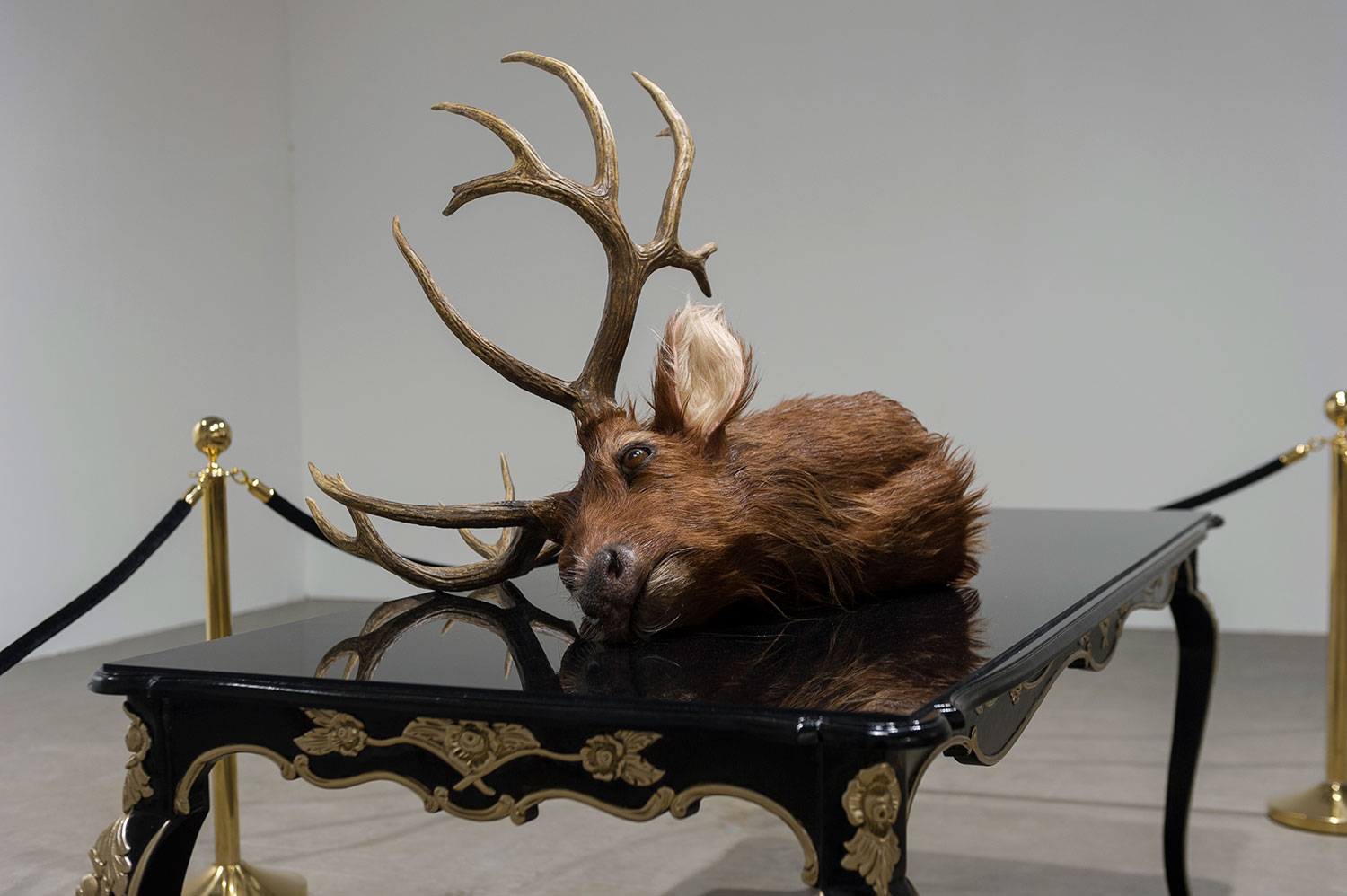Partial, if temporary, ownership can be a welcome invitation. It suits, then, that Condo London — an initiative that sees local galleries host international colleagues — continues to grow, with an additional ten galleries participating in its third run. The current incarnation includes seventeen citywide venues with a total of forty-six galleries either dividing space or cocurating exhibitions. Winter’s trimmings, as snowflake-smears, are foregrounded in the Condo map’s distant twinkling coordinates, a construct that now typically prioritizes quixotism over the intelligible.
Arguably, that choice can be made from the season’s actual structural efficacy, though the arrangement itself — international, self-organized space swaps — has many a precedent. Utilizing a quiet month in the art calendar, the map also gestures to a larger curatorial ambition that, loosened from the art-fair booth assembly, generates some capacity for surprise.
Carlos/Ishikawa, (of whom Vanessa Carlos is director, and founder of Condo), presented L(I)FE, a show that hosted Queer Thoughts (New York) and Schiefe Zähne (Berlin). Large terracotta-colored cardboard sheets created a rectal-like entranceway to cloistered works by Richard Sides, Issy Wood, Lukas Quietzsch, Quintessa Matranga, Mindy Rose Schwartz, and Diamond Stingily. Spatial seclusion enhanced the theme of puberty, with “L(I)FE” opening out to a low false ceiling of meticulously torn paper, with Stingily’s sculpture The Last Stage of Love (2017) occupying the floor — a marble, hand-carved set of teeth, clenched over a baseball. Rigid and awkward, the grip is reminiscent of the pain of becoming, the ball’s engraving reading: pro touch. Three large gouache-on-canvas paintings by Quietzsch populated the backspace, and most works hovered mid-gallery from long wires, including an oil-on-velvet painting of a bloated equine ornament of spheroid proportions: Untitled (Daddy’s overdraft) (2018) by Issy Wood, a gloomy piggybank.

Corvi-Mora and greengrassi collectively hosted JTT (New York), Lomex (New York), and Proyectos Ultravioleta (Guatemala City). The show opened with works on paper by Tatsuo Ikeda, presented by greengrassi. Realized between 1956 and 1985, the works on show belong to a generation that endured World War II and the Cold War in Japan. Conveying contemporary realities with ideas of human consciousness and cosmology, Ikeda’s delicate execution expressed attendant postwar anxieties through monstrous faces and animal figures.
Naufus Ramírez-Figueroa (shown by Proyectos Ultravioleta) explores the entanglement of history and form following his displacement during Guatemala’s civil war, reinstating the subjective nature of historical narrative itself. His series of aquatints was inspired by a 1975 student production of Hugo Carrillo’s 1962 play Corazón de espantapájaros (Heart of the Scarecrow) — a protest of Guatemala’s repressive government, in which the satirical portrayal of juridical archetypes provoked one of the most severe censorships of the arts during the Guatemalan conflict. Across the series, bodies rearticulate themselves as they become episodically exposed. Meanwhile, Kye Christensen-Knowles (shown by Lomex) foregrounded the expressive potential of the vulnerable body. Her painting Cronus Contemplating Patricide (2017) depicts an apostolic physique, sinewy and tense, the musculature itself fashioned with pathos.
Upstairs, JTT presented two videos by Sable E. Smith, who considers how incarceration impacts individuals and their loved ones — how trauma and emotional violence can extend far beyond prison walls. Peripheries of gangster masculinities are examined in Men Who Swallow Themselves in Mirrors (2017), a film comprised of gunfire footage along with excerpts from an intimate video diary shot by the artist’s father while in prison. Contingency is clear as Smith restores a particular individual within a network of impersonal structural violence. Collectively, the works on show were momentarily clarified with flickering articulations of identity, memory, and violence, with Smith’s work a visceral endnote.

The ground floor of Hollybush Gardens, hosting Jan Mot, presented the work of Sven Augustijnen, whose work examines Belgian colonial history and the ethical quandaries inherent to documentary and archival forms. In Summer Thoughts (2012–ongoing), presented here, Augustijnen uses the form of the personal letter, in this case written to the curator Marta Kuzma from 2012 to 2016, to reflect on the politics of Hannah Ryggen’s tapestries. Pasted onto the walls, the letters consider how Ryggen responded to the Nazi occupation of Norway, and then proceed to trace the historical connections leading up to the present European crisis and the rise of fascism in the region. The letters incrementally reinforce a sense of deep historical affect through personal recollection; a selection of newspapers provides a selective cartography that reexamines media framings of past political climates. Via a personal trajectory, Augustijnen deftly magnifies the volatile flows of ideology.

Project Native Informant presented Tobias Zielony’s series “Maskirovka” (shown by KOW), a set of photographs produced during time spent within the Kyiv queer techno scene, following the aftermath of the 2014 Euromaidan uprising. The title literally translates as “masking,” a term used to describe Russian covert military strategies. Masking is also extrapolated in paintings by Ned Vena (shown by Project Native Informant), who works between the digital and the canvas in woozy recreations of his body tattoos (first captured on an iPhone and originally commissioned by others). Proposed as partial portraits, the smoked opacity of their multiple layers — paint, tattoo graphics, skin — generates a palimpsest lacking tactile integrity or slick reliability. Also on view, Shen Xin’s three-channel film installation Forerunners (2016) presents a dialogue between a manager of a DNA testing service and her Buddhist mentor. Originally presented live, here performers are transposed to motion-captured animations dancing across an empty stage. The dialogue exposes the revival of eugenics via DNA testing platforms that epitomize the neoliberal logic of the subject as perpetual consumer and optimized producer.
As a building or complex of buildings containing individually owned property, the term “condominium” instantiates a shared interest in the whole. Understandably, it is this “togetherness” that can slip into triviality — collectivity becoming merely a fawning sycophancy. Yet the Condo project speaks to a necessary presence of the neighborhood, however outstretched; with Condo we may see this sensibility as a useful strategy for collective safeguarding, if not a means of outlasting the lone wolf.





